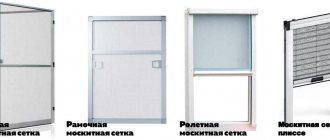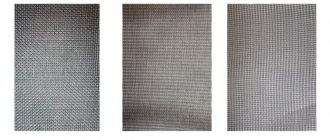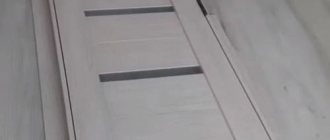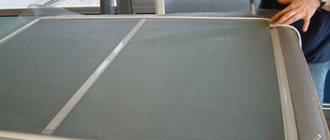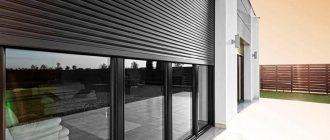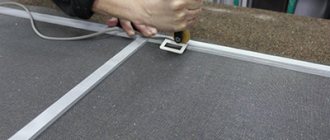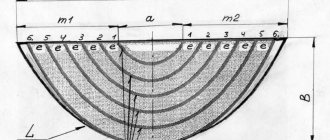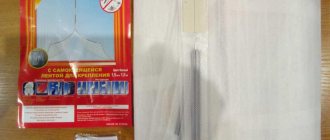A mosquito net is a wonderful protection for your home from annoying insects, fluff and dust. In addition, this is excellent insurance for pets who cannot jump out of the window and therefore can safely be left open. It is installed in a special profile for mosquito nets, which is attached to the frame and protects the house from external influences.
Mosquito profile
The mosquito net profile is a kind of frame that firmly holds the net inside. The main thing in the design is its quality; the profile must be durable, easily withstand all adverse external influences and serve you for many years. Profiles are produced in a variety of sizes. There are profiles for different sizes of windows, balcony doors, and vents.
The mesh in the profile is made of polyamide - a material that is resistant to temperature changes, humidity and ultraviolet radiation. It is not subject to deformation and does not change over time, is completely fireproof, and does not contain materials harmful to health. Cleaning the mesh is simple, just a regular damp cloth and soap is enough. Mosquito profiles can be removed easily and effortlessly.
Unpacking the mosquito net making kit
Is your plastic window stuck and won't open? Read our material “What to do if a plastic window does not open?”. Find out how to properly adjust a double-glazed window in our article here
Are you choosing window fittings? Especially for our readers, a review of the brands of window fittings available on the Moscow market.
We measure the opening.
Let's say our frame mosquito net will be attached from the outside with upper and lower z-fastenings, which can be plastic (a budget option, the net holds up well, but after 3 - 5 years you will have to change them, since the plastic gradually breaks down due to temperature changes) or metal (they cost more expensive, but over time they do not break or crack, they will last a very long time)
The first thing to do is measure the opening into which the mesh will be inserted. Using a tape measure, we measure the light opening of the window - “from elastic to elastic” in length and width.
Add to the results obtained 5 cm for width and 5 cm for length. Our mesh will be pressed against the frame from the outside and we overlap the frame on each side by 2.5 cm. Please note that this part of the frame is completely free. If the profile is narrower on some side, then make an overlap of perhaps 1 or 1.5 cm.
And so, our light opening turned out to be 750 x 350 mm, which means the size of the frame on the outer sides will be 800 x 400 mm.
How to make a profile with your own hands
If you do not want to make custom profiles, you can purchase a kit for making a mosquito net. It is not difficult to do it yourself; you will save quite a large amount if you do not pay for the work of a master. In order to do the job efficiently, you will need tools such as a hammer, knife, screwdriver and tape measure. As well as some components, for example, corners for a mosquito net, handles, fasteners, holders. The mosquito net kit includes an impost and a frame profile.
- Take the necessary measurements of the window frame where the mosquito profile will be inserted.
- According to the measurements taken, cut a piece of the profile. The required size is calculated as follows: subtract 60 mm from the external dimensions that you measured before. Cut the crossbar profile.
- Take metal corners for the mosquito net. Drive the profile into the corners with a hammer, the result should be a rectangular frame.
- Place a piece of mosquito net on top of the profile so that it protrudes at least 30 centimeters at the edges.
- Take the rubber cord and tuck it into the profile grooves on top of the mesh.
- Trim any excess mesh that is left sticking out at the edges.
- Mount the metal corner elements that are necessary for proper fastening of the profile in the window.
- Install the handle by lifting the edge of the rubber cord and securing it in the groove of the profile.
Accessories for mosquito nets are available at any hardware store or on the websites of window installation companies. Purchasing components for mosquito nets will not be a problem. Now that the profile has been assembled, it is time to place it in the window frame.
Installation of mosquito profile
It doesn’t matter whether you purchased a ready-made profile or a kit for assembling a mosquito net and made it yourself, installing a mosquito net will not be difficult.
- From the outside, install two fasteners into the lower part of the window frame and tighten the screws.
- Install two more fasteners on the top of the window, also drill holes and tighten the screws. Do not forget that the screw-in areas should be treated with sealant to avoid moisture accumulation in these places. Otherwise, you risk getting a bloated and deformed profile.
- Install the mosquito net onto the fastenings: first click the upper ones, then the lower ones. Check how tightly it holds.
Installation of mosquito profile
Accessories for mesh
The main thing in proper installation is good fittings for mosquito nets, which will allow you to create a durable profile. You will not be able to assemble a high-quality structure without using the following components.
- The frame profile is the supporting structure on which the entire profile rests. Made of aluminum, can be painted in any color.
- An impost is a frame crossbar that performs an important supporting function. Also made of aluminum, increases structural strength.
- Cord for fastening. The name speaks for itself; it securely holds the mesh in the grooves of the profile.
- Another important element is a corner for a mosquito net. The corners connect all the profile parts to each other. Corners come in plastic and metal. It is recommended to choose those made of metal, as they are virtually eternal and are not subject to external influences, unlike plastic, which must be replaced every few years.
- Other accessories for plastic window screens - handle, fasteners, screws.
Mosquito nets for windows with metal z-fastenings
Read about the features of installing mosquito nets on plastic windows in our material at the link https://oknanagoda.com/okna/plastik/remont/chem-khorosha-setka-antikoshka-i-kak-ee-ust.html On the balcony door you can simply install a mosquito curtain. Read how to do this in the article “Mosquito curtains and drapes.”
Read more about how to install a mosquito net with your own hands in our material on the website.
Velcro fastening
Mosquito nets, which are secured in the opening with Velcro, are characterized by increased wear resistance, protected from the influence of sunlight, temperature changes and high levels of humidity. When dismantled, they fold up, so they do not require much space when stored in winter. They can not only be cleaned by hand with soap and a sponge, but also machine washed.
Attaching the mosquito net with Velcro
Installing a mesh with Velcro can be done by anyone; it does not require complex tools. To begin with, the window opening is thoroughly cleaned of dirt and dust accumulated on the surface. A strip of special adhesive tape is glued to it along the entire perimeter, and the mesh is pressed against it. It is enough to hold it for several minutes (about 5 minutes), pressing it tightly against the tape so that it is securely fastened. The tape on its surface has many hooks that cling to the loops of the mesh, forming a tight and reliable connection. It is narrow and almost invisible from the outside, does not leave sticky marks, which makes it very convenient to use. A window mosquito net with Velcro unibob, the photo of which clearly demonstrates all its advantages, is one of the simplest and relatively cheap ways to protect against insects and dust flying into open windows.
Velcro nets can be used on any windows, they can withstand loads of up to 5 kg and are easy to clean; they are cheaper than other designs. Like other types of nets, they are used only in the warm season and are removed for the winter.
Mosquito net fastenings
Fastenings are one of the most important parts of the profile, since without fastenings it will be impossible to assemble the structure and install the mosquito net in the window frame. Fastenings are divided into several types..
- Z-shaped plastic and metal fastenings are the most popular type of fastenings for profiles. They are easy to install and durable. The disadvantage of plastic products is that the service life is a maximum of 3–4 years, after which it is necessary to change the fastening. When exposed to sunlight, the material breaks down and deteriorates. The service life of metal fasteners is unlimited.
- Plastic flags, they are also lambs. They are usually installed only because it is impossible to install standard brackets. The disadvantages are the same as those of plastic Z-mounts. They are easy to install, fix the profile by turning like a handle. Often used as an addition to existing mounts.
- Metal hooks. This type of fastening can last a long time, but has a number of serious disadvantages. Since the hooks are attached directly to the seal, the frame significantly reduces the light opening, and the seal wears out quickly.
- The plunger mount, also known as a pin mount, is installed inside the frame. It is associated with some difficulties in installation, as it requires an additional brush seal. Often used in window structures where grilles are installed.
When mounting and installing a mosquito profile, pay special attention to the quality of materials. Follow all the necessary steps step by step, be careful and take a responsible approach to your work, and as a result you will get an excellent profile that will protect from insects, dust and rain for many years.
Frame profile
A frame insect screen is the most popular device to prevent the ingress of tree pollen, dirt, and, first of all, it protects against flying mosquitoes.
Profile insect screens have the form of a frame made of aluminum or plastic. Installation of the canvas on the frame of the window block is usually done from the outside, while frames can be made of wood, aluminum, or PVC.
Fastening of the mesh frame can be varied: using auxiliary Z-shaped brackets made of plastic on the outside or inside of the window; by spring-loaded pins with capsules.
The advantages of mesh frame structures are obvious:
- Convenient installation and removal;
- No special care required;
- Quality is maintained in any weather;
- Do not affect visibility and fresh air supply;
- They have an aesthetic appearance and a reasonable price.
The main parameter of any mosquito net is the material itself. When choosing, you need to take into account the size of the cells, the thickness of the canvas, its type, as well as strength.
The last point is especially important because the mesh must withstand accidental “raids” of birds and the penetration of cats. For these reasons, the best option would be polyester with the necessary impregnation.
It is important to install such durable nets on a balcony or loggia, and it does not hurt to install an additional set of fasteners.
Rice. 2. Frame insect screen

